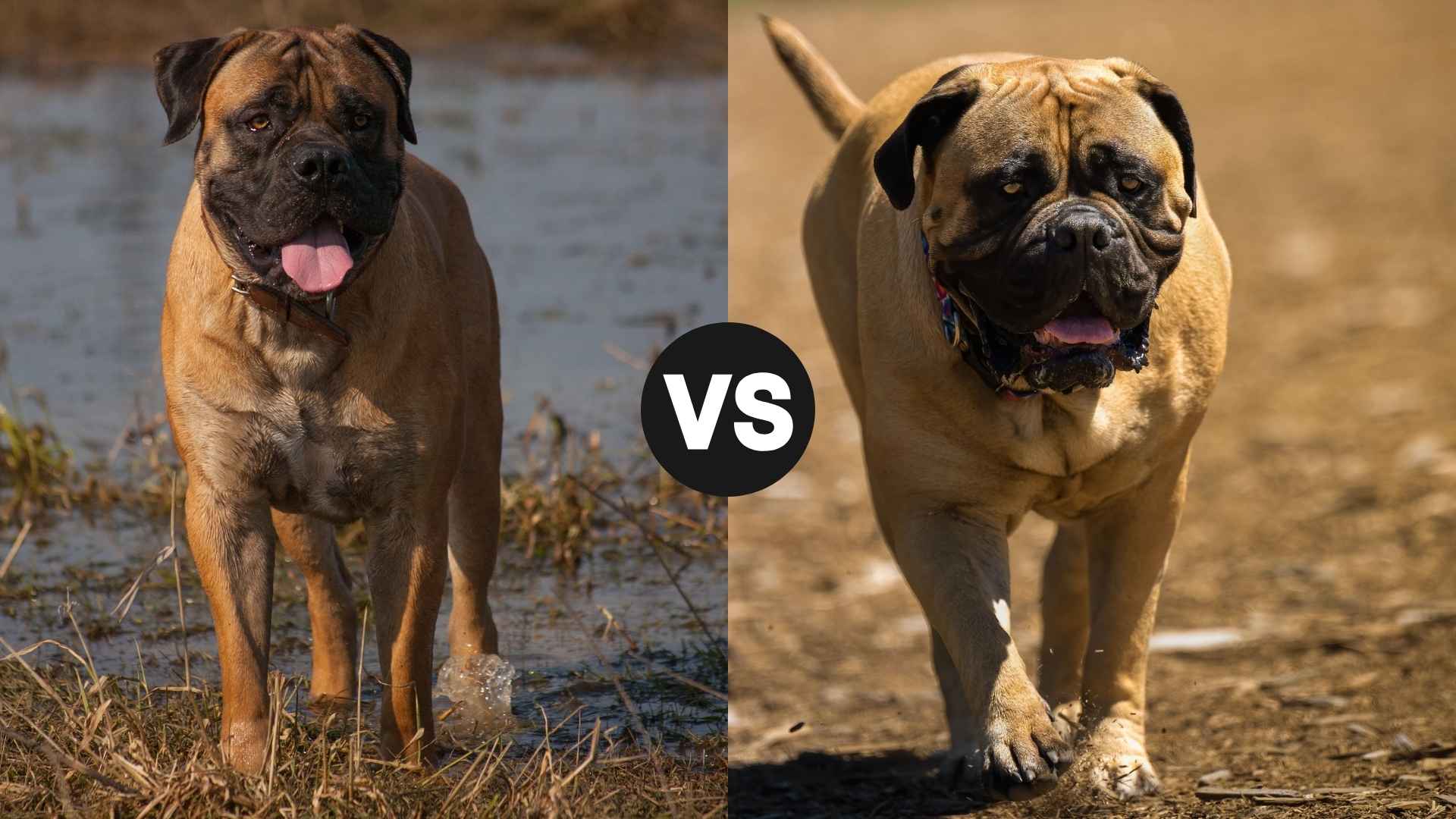Thinking about the Bullmastiff vs Boerboel debate for your next estate or livestock guardian? At first glance, these two muscular, mastiff-type dogs appear nearly identical—broad heads, powerful frames, and a commanding presence.
You might even mistake one for the other if they stood side by side. But beneath their similar exteriors lie some key differences that could sway your decision. The Boerboel is a large breed and more demanding of the two, requiring a firm hand and experienced ownership.
On the other hand, the Bullmastiff is known for its calmer demeanor and is a favorite among American families, though it’s not a perfect fit for every home. Suppose you’re torn between these two giants or simply curious about what sets them apart.
In that case, this comparison will help you understand their origins, temperaments, and needs, so you can confidently choose the best companion for your lifestyle.
Boerboel vs. Bullmastiff
The Boerboel dogs, also known as the South African Mastiff, were bred by Dutch, German, and Huguenot settlers in South Africa during the 1600s. These massive dogs were developed to guard farms against ferocious predators like hyenas and lions. Their name comes from the Dutch word boer, meaning farmer, reflecting their roots in agricultural protection.

Fiercely loyal and highly territorial, Boerboels were designed for endurance and strength, serving as formidable guardians. Although they’ve existed for centuries, breed preservation efforts only began in the 1980s, marking a formal recognition of their distinct working capabilities.
In contrast, the Bullmastiff has its roots in 19th-century Britain, where gamekeepers bred them by crossing Bulldogs with Mastiffs to deter poachers. Known then as the “Gamekeeper’s Night Dog,” this breed was built for silent strength and obedience.
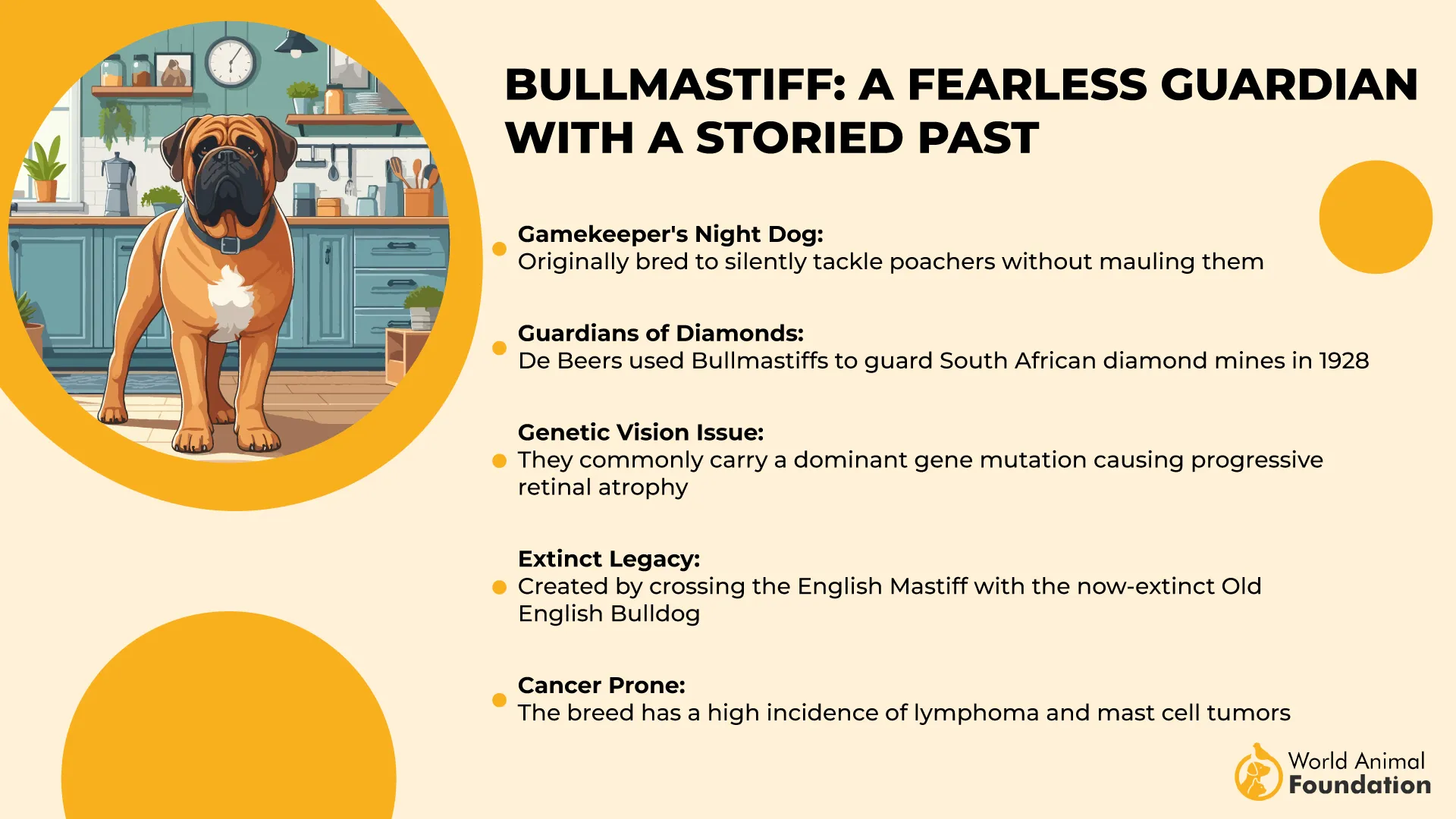
Agile yet powerful, Bullmastiffs were trained to chase, catch, and pin intruders without causing harm. Their protective instincts remain strong, but their calm, affectionate temperament has helped them transition from large estate guardians to beloved family companions.
Comparison of Size and Weight
When it comes to sheer size and weight, the South African Boerboel takes the lead. Males typically stand between 24 to 27 inches tall at the shoulder, while females range from 22 to 25 inches. These dogs are impressively built, with both sexes weighing between 150 to 200 pounds. Their broad, muscular frames and dense build make them one of the most powerful mastiff breeds, well-suited for guarding large properties or farms.
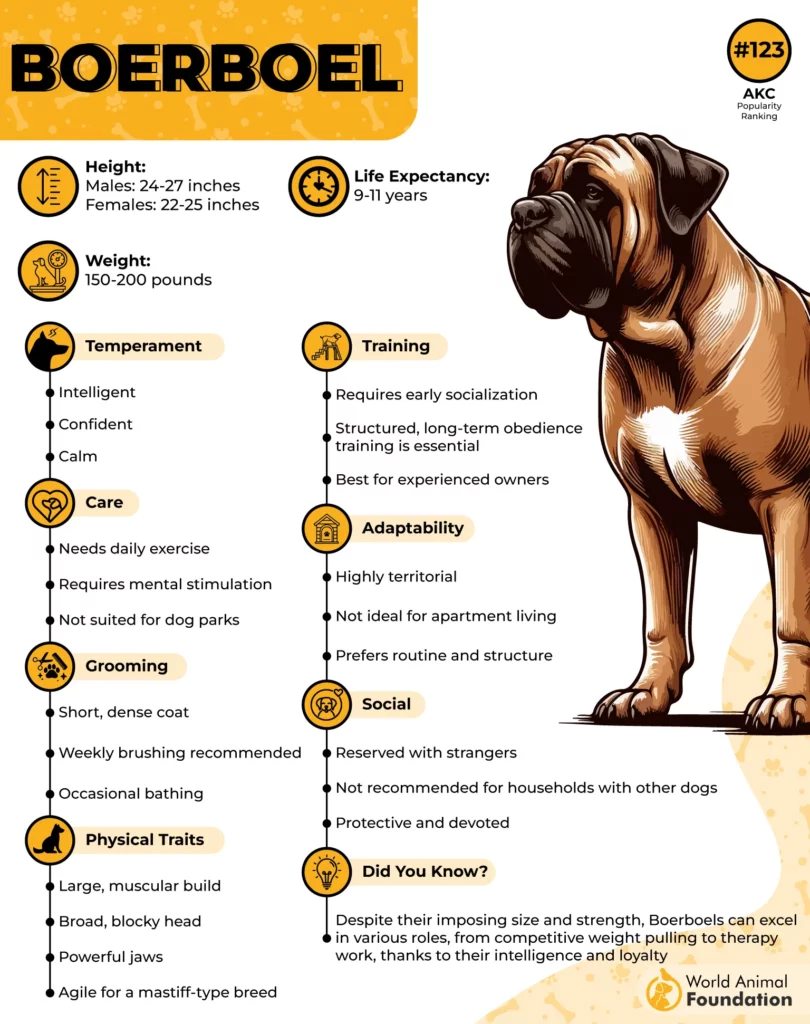
As noted by WebMD, the Bullmastiff, while still a large and solidly built breed, is slightly more compact than the Boerboel. Males measure about 25 to 27 inches tall, and females stand 24 to 26 inches. Their weight is noticeably lighter, with males averaging 110 to 130 pounds and females ranging from 100 to 120 pounds. Though not as heavy, Bullmastiffs still have a powerful presence, blending the stocky strength of the Bulldog with the size and intimidation factor of the Mastiff.
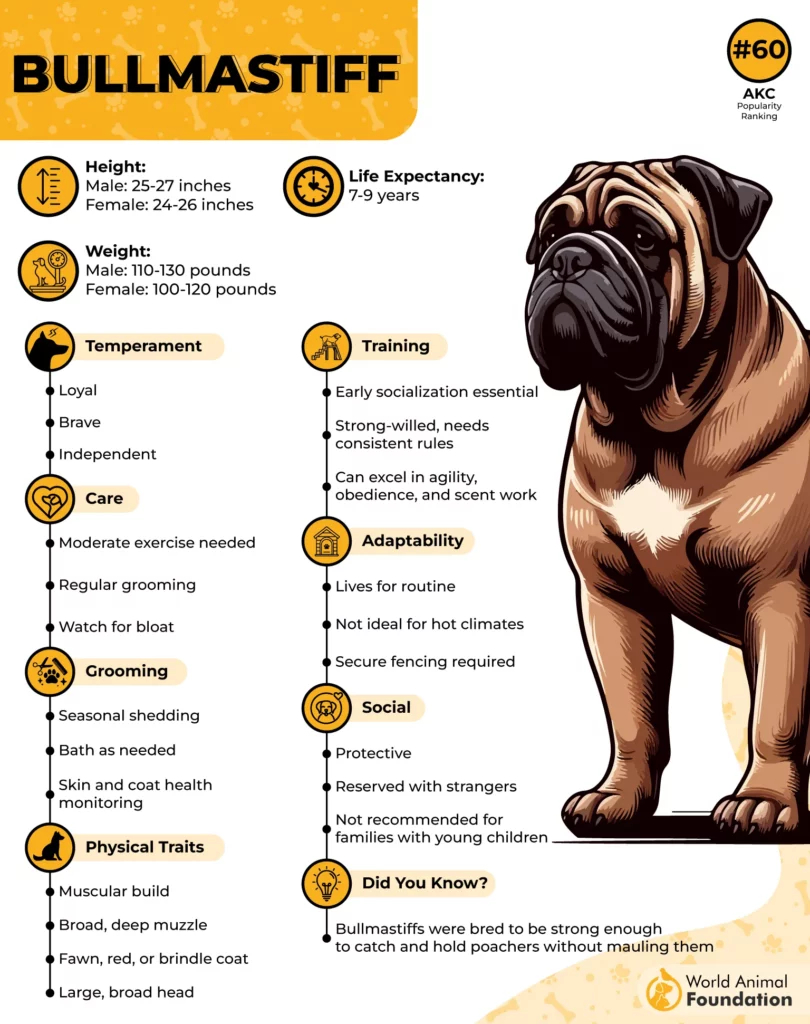
Personality and Temperament Overview
The Boerboel may be massive, but at home, this breed is typically calm and affectionate. They can be great companions for families with older children who understand how to interact respectfully with dogs. Due to their size and strength, they may not be ideal for homes with small kids, as accidental bumps can occur.

Boerboels are intelligent and energetic for a Mastiff-type, requiring daily physical activity and mental stimulation. Without proper outlets, they can become bored and destructive. Early socialization helps them coexist well with other pets, especially those raised in the same household.
In comparison, the Bullmastiff is also a gentle, loyal breed known for its affectionate nature with family members, including children. However, they can be wary of strangers, making early socialization crucial.
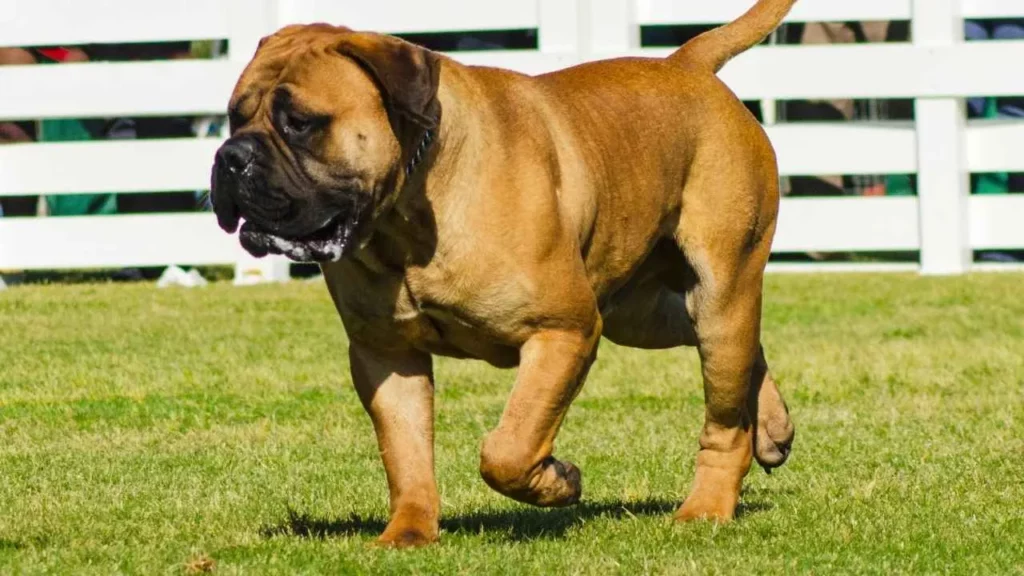
Bullmastiffs are smart, trainable, and do best when introduced to puppy obedience classes early on. Though generally calm and quiet, they are alert and protective, barking only when something seems amiss. With proper training, they can adapt well to multi-pet households.
Adaptability and Level of Independence
When it comes to adaptability, both the Boerboel and Bullmastiff are fairly average. They can handle lifestyle changes and new environments with reasonable ease, especially when introduced gradually and with positive reinforcement.
However, due to their large size and guarding instincts, both breeds thrive best in spacious homes with secure yards rather than small apartments. While neither breed is highly adaptable like some smaller or more flexible breeds, they can settle into a new routine well with the right structure and consistency.
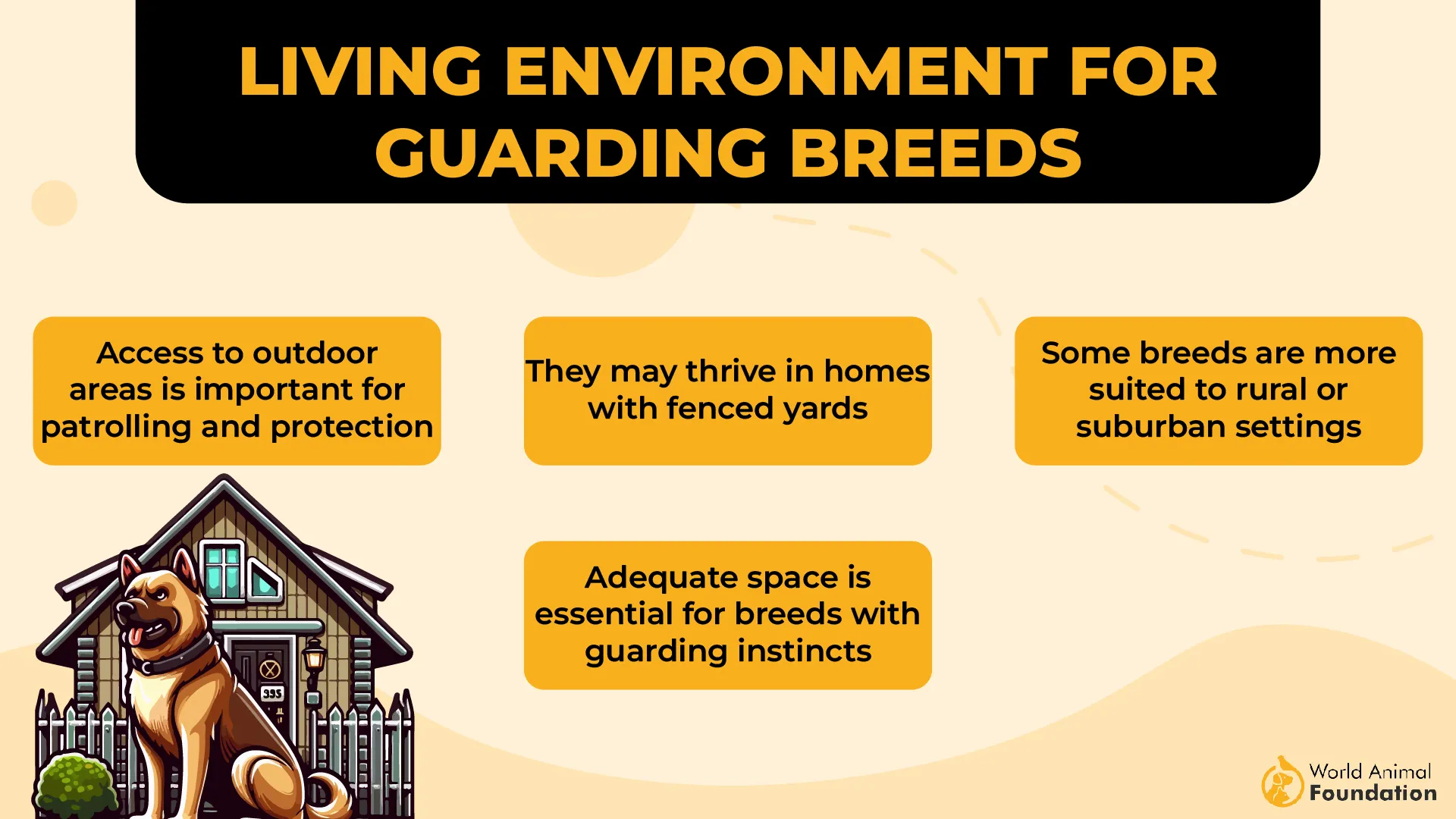
In terms of independence, both dogs tend to form strong bonds with their owners and dislike being left alone for extended periods. Like most puppies, Boerboels and Bullmastiffs can exhibit signs of separation anxiety, such as barking, whining, or destructive behavior, if left without company or stimulation.
Early training, crate comfort, and gradually increasing alone time can help them build tolerance, but these breeds generally do best in homes where someone is around for a good portion of the day.
Bite Force and Jaw Characteristics
The Bullmastiff has a bite force estimated between 200 to 400 PSI, placing it in the “ordinary but powerful” range among dog breeds. While not the most forceful bite, it’s still strong enough to cause injury if not properly trained and managed.
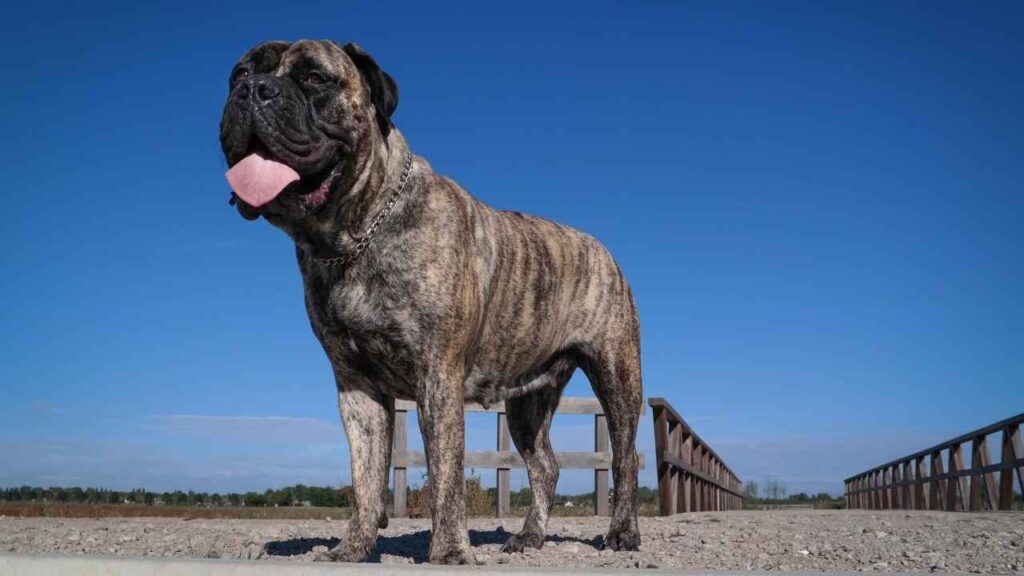
Despite this strength, Bullmastiffs are typically calm and obedient when raised in a structured environment. Their jaw strength adds to their imposing presence, which makes early socialization and bite inhibition training essential, especially when introducing them to unfamiliar people or situations.
In comparison, the Boerboel—like its Mastiff relatives—is known for having an even stronger bite force. Though exact PSI data for Boerboels isn’t always cited, the breed is often grouped with powerful-jawed dogs like the English Mastiff, which boasts a bite force of around 556 PSI.
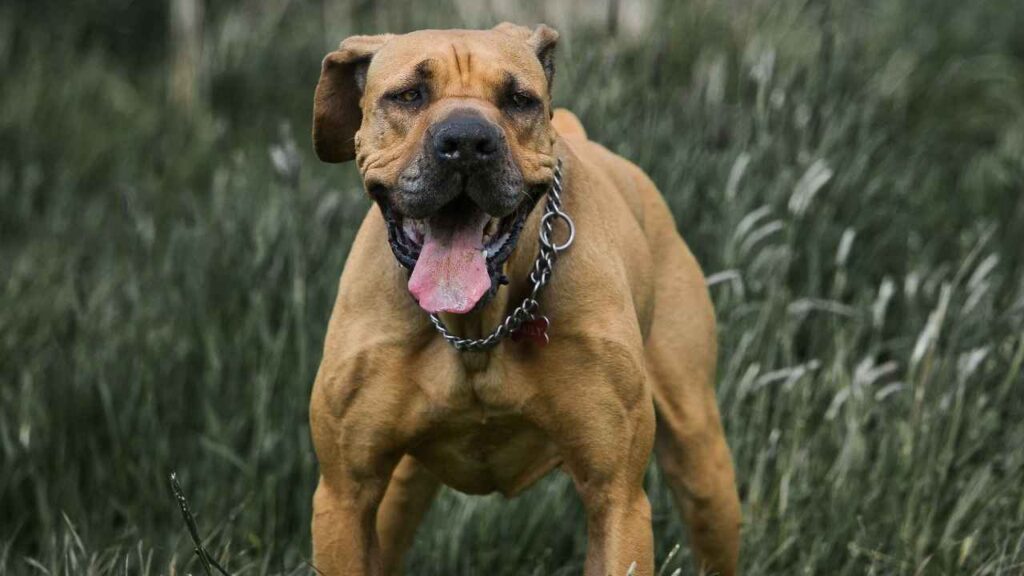
This suggests the Boerboel’s bite is significantly stronger than the Bullmastiff’s. Bred to fend off dangerous wildlife, the Boerboel’s massive head and muscular jaw reflect its original role as a fearless protector.
Health Conditions and Lifespan Analysis
The Boerboel typically lives 9–11 years, which is slightly longer than many large dog breeds. While generally healthy, Boerboels are prone to several genetic and structural health issues. Responsible breeding and early health screenings are crucial in reducing the risk of these health concerns.
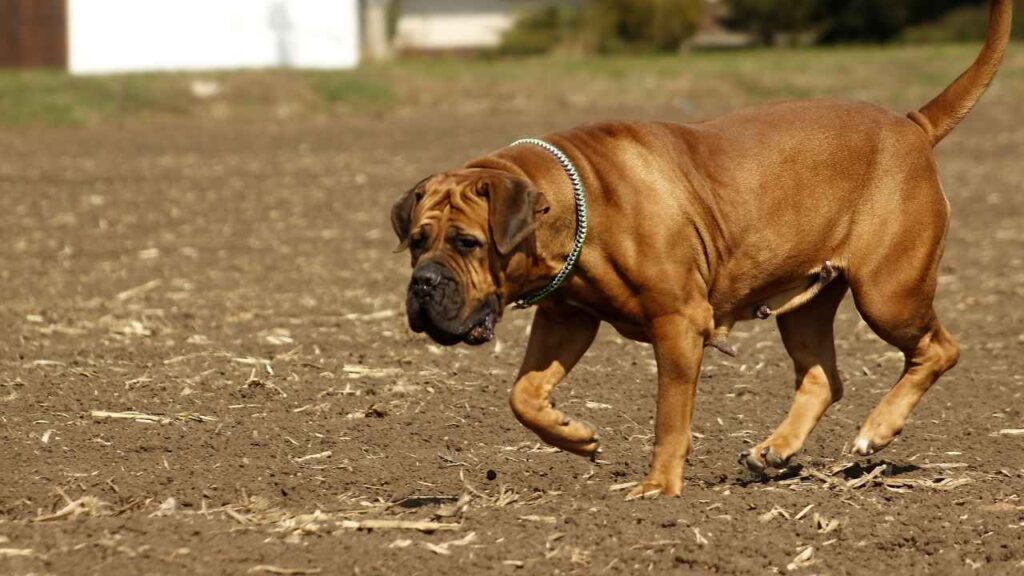
Common Health Issues in Boerboels:
Hip and Elbow Dysplasia: Misalignment of joints leading to arthritis and mobility issues.
Entropion & Ectropion: Inward or outward rolling eyelids causing eye irritation or damage.
Dilated Cardiomyopathy (DCM): Heart muscle weakening that reduces blood flow; symptoms include lethargy, coughing, and a distended belly.
Gastric Dilatation-Volvulus (GDV): Life-threatening bloating and stomach twisting; emergency care is required.
Preventive Care Tips: Joint screening (X-rays), eye exams, early heart checks, and consideration of preventive gastropexy for bloat-prone dogs, state PetMD.
The Bull mastiffs have a slightly shorter life expectancy of 7–9 years, with several known breed-specific health challenges. Genetic testing and proactive care from reputable breeders play a big role in managing their health.
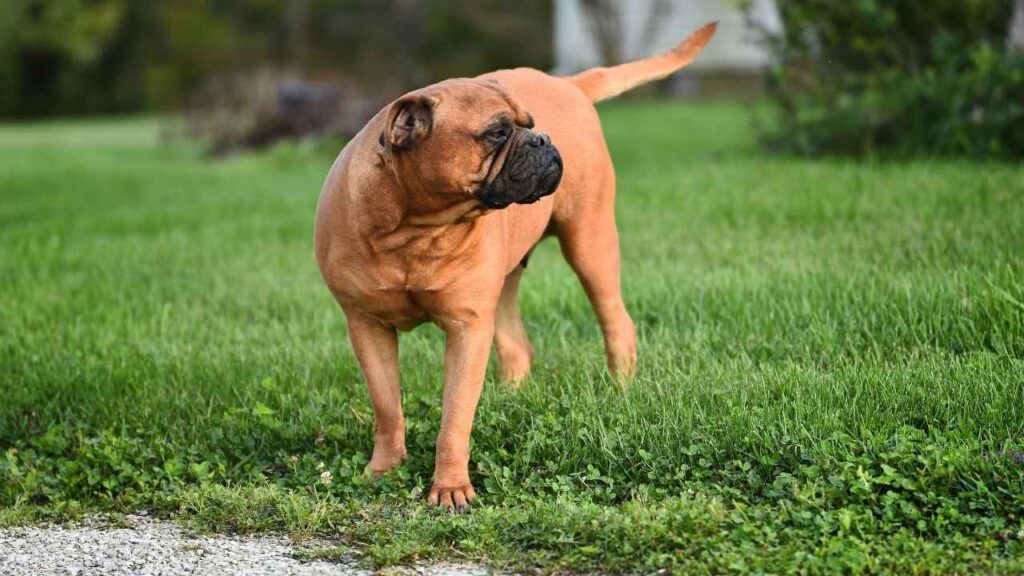
Common Health Issues in Bullmastiffs:
Dilated Cardiomyopathy (DCM): Heart weakening that can lead to sudden collapse or death; managed with medication.
Subaortic Valvular Stenosis (SAS): Congenital heart obstruction; may cause exercise intolerance and sudden death.
Progressive Retinal Atrophy (PRA): Inherited eye disease leading to blindness.
Hip & Elbow Dysplasia: Bone misalignment resulting in pain, arthritis, or mobility issues.
Lymphoma: A form of cancer affecting lymph nodes and organs; often treated with chemotherapy.
Entropion: A painful eye condition requiring surgical correction.
Gastric Dilatation-Volvulus (GDV): Deep-chested breeds risk of bloat and stomach twisting; requires emergency intervention.
Preventive Care Tips: DNA testing for PRA and SAS, regular heart monitoring, orthopedic screening, and awareness of cancer signs.
Energy Levels and Daily Exercise Needs
The Boerboel is a powerful and athletic breed with high energy levels that demand daily physical and mental engagement. Long leash walks, structured play in a securely fenced yard, and activities that include owner interaction are ideal.

These dogs excel in tasks like obedience, weight pulling, agility, and protection sports, but should never be allowed off-leash due to their territorial and dominant tendencies. Dog parks are strongly discouraged, as most Boerboels can be aggressive if challenged by other dogs. Without sufficient stimulation, they can become bored and destructive, states AKC.
Bullmastiffs, while less intense than Boerboels, still require daily moderate exercise to maintain good health and behavior. Brisk walks, light outdoor play, and mental stimulation keep them happy, especially when provided in a safely enclosed environment, states Purina.
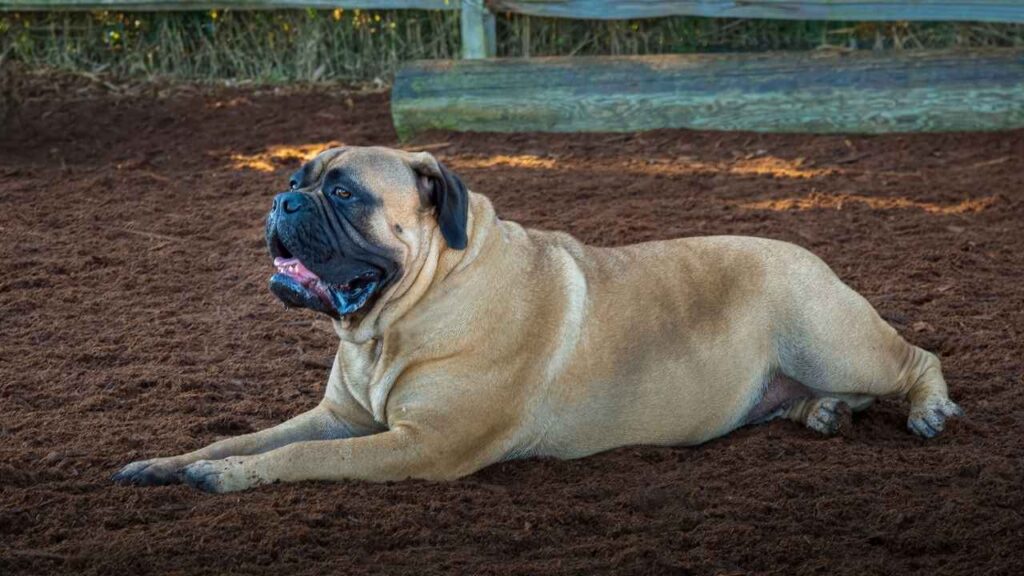
They are not suited for high-impact activities or long-distance running, particularly as puppies, when their joints are still developing. It’s also worth noting that the Bullmastiff has a flatter brachycephalic face, which is another reason to keep him in a colder climate. They’re loyal walking companions but not ideal for highly active owners seeking a high-speed workout buddy.
Grooming Requirements and Allergy Considerations
The Boerboel has a short, dense coat that’s smooth and glossy with regular care. As per the AKC breed standard, the common coat colors include brindle, brown, cream, red brindle, reddish-brown, and tawny, often with a black facial mask. Boerboels shed moderately year-round and benefit from weekly brushing with a soft brush or more during active shedding season. Occasional baths are sufficient. Other grooming needs include nail trimming to prevent discomfort.
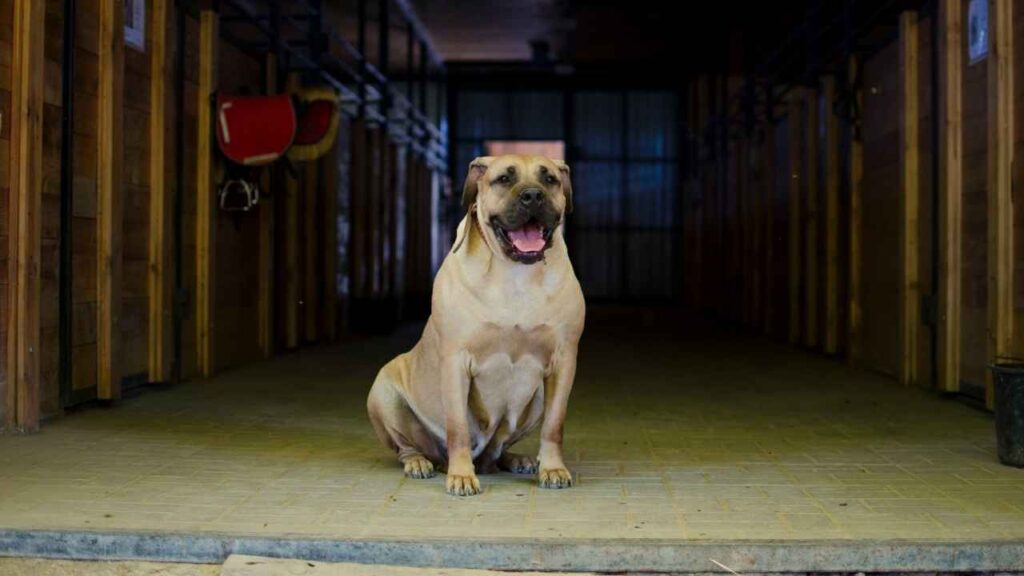
The Bullmastiff also has a short, low-maintenance coat that sheds seasonally. Brushing with a grooming mitt helps manage shedding and maintain coat health. Bathing is needed occasionally, and owners should monitor for skin dryness or oiliness, which may indicate allergies or dietary issues. A well-balanced diet and consistent grooming support healthy skin and coat, states AKC.
Conclusion
In the comparison of Boerboel vs. Bullmastiff, both breeds stand out as powerful, loyal, and protective bull-type dogs, but they cater to different types of owners and lifestyles. The Boerboel is more energetic and assertive, with a longer muzzle and a dominant character that demands firm leadership and intense training from a young age.
This breed thrives with owners who understand large breed dogs and are prepared for consistent exercise and mental stimulation. On the other hand, the Bullmastiff, known for its flatter face and slightly calmer disposition, is more manageable for a first-time dog owner, though it still requires structured training and socialization.
While both breeds share strong guarding instincts and a history as excellent protectors, they have slight differences in temperament, energy levels, and grooming needs. The Boerboel may be too intense for novice dog owners, while the Bullmastiff’s laid-back nature and adaptability to cold and wet climates can make it more appealing among other breeds in the guard dog category.
Choosing between the two breeds depends on your experience level, commitment to training, and ability to handle a dominant dog breed, but with proper care, either can become the best dog for a well-prepared and responsible owner.


